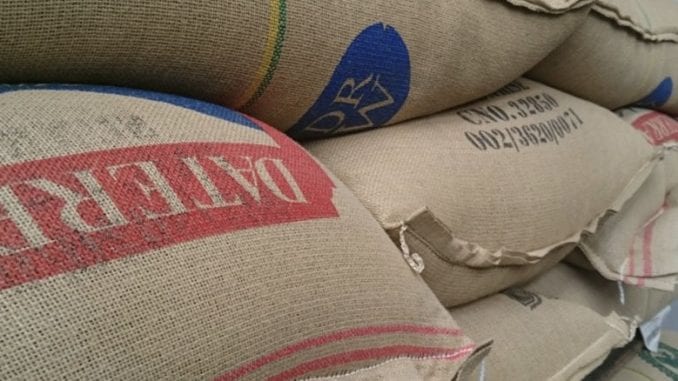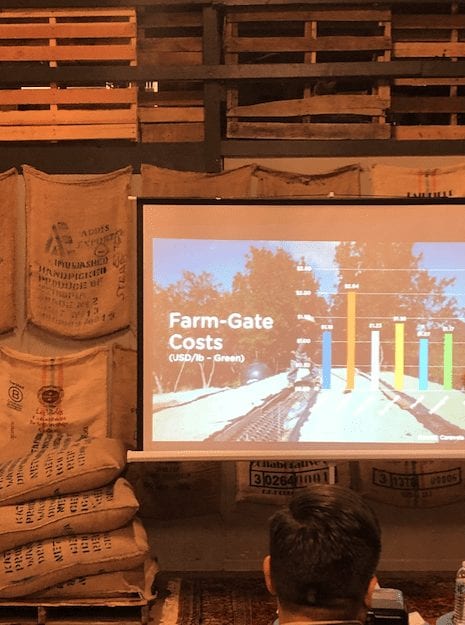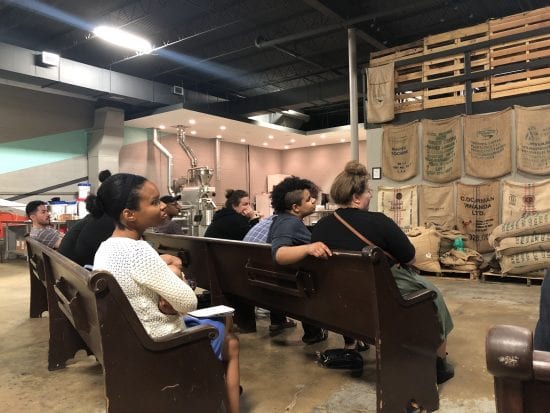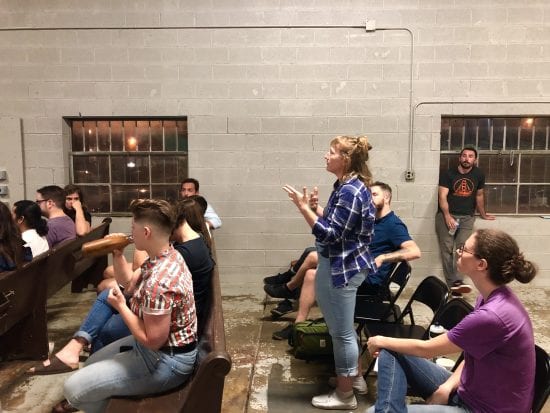
Green coffee exporter and importer Caravela Coffee tours the United States with a presentation focused on the cost of coffee production in Latin America.
BY ANGELA FERRARA
SPECIAL TO BARISTA MAGAZINE ONLINE
Cover photo by Lyndon’s Coffee
Alejandro Cadena, CEO and cofounder of Caravela Coffee, delivered a presentation titled “Farmgate: Producers in Crisis” on September 12 in Washington, D.C., at the Small Planes Coffee roastery. He walked attendees through information that Caravela collected in 2017 and 2019 about coffee production costs from a range of Latin American countries. With a background in economics and nearly 20 years of experience importing and exporting coffee, Alejandro explained that even if a roaster is paying what they believe is a fair amount for their coffee, it’s so hard to track these costs that it’s difficult to know how much is really going to the farmer.

The presentation started with a five-question survey for attendees. It started with a few simple questions like, “What is your nationality?” and “What is your role in the coffee industry?” and got progressively more difficult with questions like, “In your opinion, what is the biggest challenge for coffee producers?” and “What is the minimum price you should pay for a pound of green specialty coffee?” The final question of the survey was a hard-hitter: “Would knowing the real cost of production make you more inclined to pay a better price for coffee?” Once the surveys were finished, Alejandro redirected the attention of the audience to a slideshow.

First, Alejandro defined the cost of production as “costs incurred by a coffee farmer to produce coffee at the farm level from planting until production of dry parchment,” and broke down the influencing factors including labor, taxes, transportation, the efficiency of the supply chain, inflation, exchange rates, productivity, and yields. The constant fluctuation of these factors isn’t the only reason that calculating typical production cost is difficult. Additionally, most farmers don’t have access to good record-keeping, which makes it almost impossible to track and calculate the actual cost of each farm’s production.
Caravela Coffee’s research covered six countries: Colombia, El Salvador, Nicaragua, Mexico, Guatemala, and Honduras. Alejandro explained that, when considering cost factors, no two producing farms are the same. Minimum wage for workers isn’t the same in any of these countries, therefore harvesting labor costs alone vary wildly. Unfortunately, in comparison to 2017, the cost of production is increasing while market prices are decreasing across all origins.

At the origins that Caravela Coffee studied, the conclusion was that at current market prices, coffee farming is just not profitable. “We cannot stop at cost of production,” Alejandro warned. “We must also focus on attaining living income for farmers, otherwise it sill isn’t sustainable.” The presentation ended by revisiting the survey from the beginning. While there were many different roles in the industry accounted for, and a range in how much attendees thought they should pay for a pound of green coffee, 100% of attendees agreed that knowing the real cost of production would make them more inclined to pay a better price for coffee.
“Farmgate: Producers in Crisis” has two more dates lined up for the tour in Dallas (October 10) and Seattle (November 7). Visit the website for details.

ABOUT THE AUTHOR
Angela Ferrara is the director of communications and social media at The Barista League. She’s based in Baltimore.


